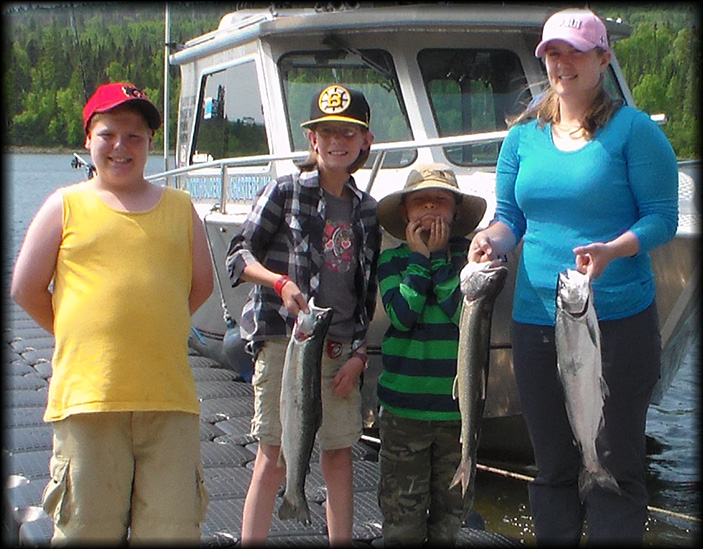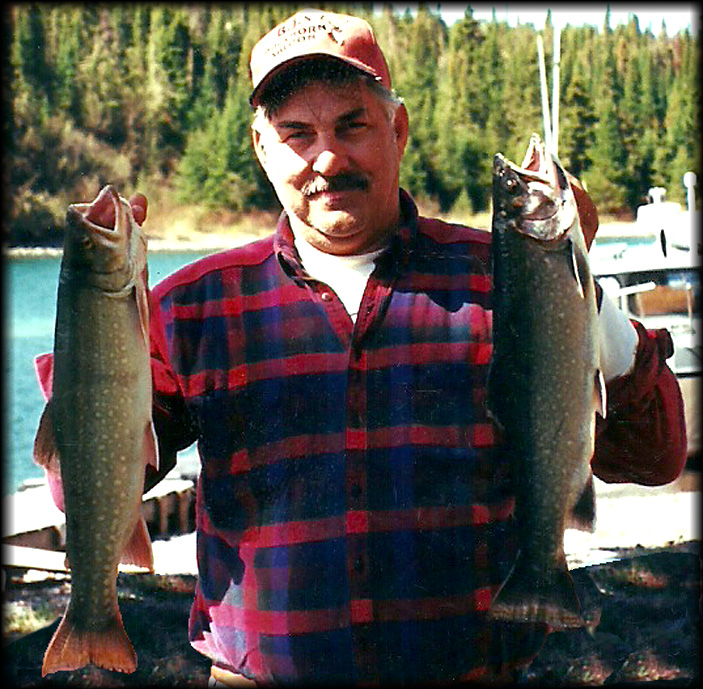Nipigon Salmon Fishing

It’s Time to Start Your Adventures
After World War II; farm production around the Great Lakes went into overdrive. Massive amounts of fertilizers were used to increase food production to feed the post-war baby boom in Ontario and the USA. These fertilizers made their way into the Great Lakes via rain water. Excessive nitrates in the water caused massive algae blooms to developed thus creating islands of green slime floating on the lakes that were miles across. The conditions were perfect for two invading species of fish brought into the Great Lakes via ship’s ballast water. They were the Alewives and Rainbow Smelt. Alewives and Rainbow Smelt populations skyrocketed to the point that they were 90% of the bio-mass in the Great Lakes by the 1950s. It was just like the Asian Carp problem they have in the Mississippi River today. As a young boy I remember standing on the shore and seeing 15 feet of floating dead Alewives before the water started. It was an ugly stinking mess. The Atlantic Salmon was commercially fished into extinction on the big lakes so they needed a ferousious preditor to clean things up. They needed a non-stop eating machine. They chose Pacific Salmon.

In the mid-1960s they started stocking the Great Lakes with Chinook Salmon (King Salmon) and Coho Salmon. Pink and Sockeye Salmon were also stocked but their populations to this day are very low and considered a rare fish to catch. Coho populations are stable and they are available but Chinook Salmon populations took off and they are the dominant species of salmon in Lake Superior. Chinook Salmon successfully spawned in the rivers and their numbers grew and the salmon grew big and fat with what seemed to be an inexhaustible amount of food. By the 1970s 35 to 40-pound Chinooks were common, with the Ontario record being over 46 pounds.
The massive schools of Alewives have been eaten and the salmon now sustain themselves mainly on native species such as Lake Herring and Cisco. Since the late 80s many fisherman have noticed that the average size Chinook is getting smaller. Most of the Chinooks now are around 15 to 25 pounds when they reach spawning age. They are still available in good numbers, especially in late summer when they start staging 5 to 10 miles off the mouth of the Nipigon River. They can be caught in good numbers with big fish being very available. The odd 35 pounder still gets caught.

Even though big salmon are fun to catch, most hard-core salmon hunters want the Spring Jacks. A Spring Jack is a term to describe the smaller 1-to-2-year-olds that are 2 to 6 pounds. No salmon on Earth tastes better than a young Spring Jack. The north shore islands off of Nipigon supply a diverse structure, which attracts the baitfish, which in turn keeps the Spring Jacks in the area of our camps all year. There is also a healthy population of Coho Salmon. They are a smaller species and rarely get over 8 pounds. Coho is considered a prestigious fish to catch mainly because they taste so good. They have a mild flavor compared to the Chinooks.
Atlantic Salmon are being stocked again. They were commercially fished to extinction in the Great Lakes by 1900. In 1855 the founder of the village of Salmonville, later renamed Terra Cotta, was a man named Henry Tucker. He wrote in his journals that the rivers were so full of Atlantic Salmon that you could walk across the river without getting your feet wet. Those days are long gone but the effort to bring back the Atlantic Salmon has been started. 1.5 million Atlantic Salmon are being stocked every year on the Ontario side of Lake Superior. It’s a huge project being spearheaded by the Ontario Federation of Anglers & Hunters. At present they are still fairly rare and you have to release them with a conservation license. You are allowed to keep one if you have a sport license.
If you like salmon fishing, you will love spending a week at our camps because the salmon are everywhere and caught in outstanding numbers. If you specifically want a big salmon then August or early September is a good time to come when the mature salmon are right offshore waiting to go upriver and spawn.